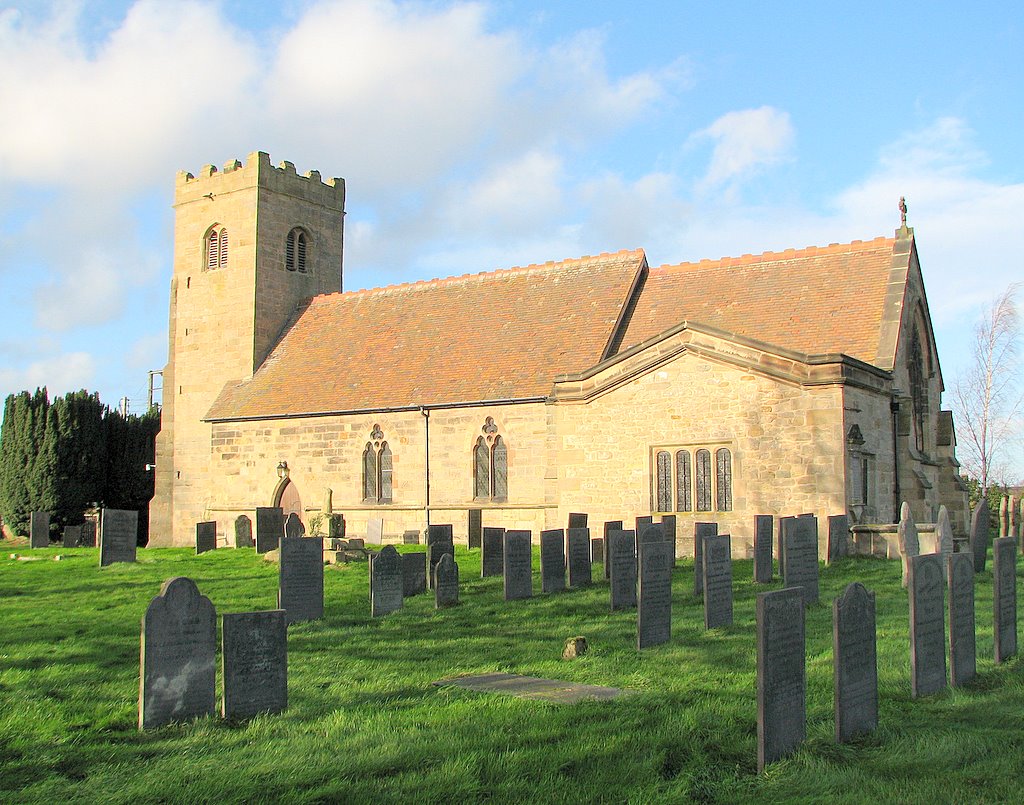- Thomas Bancroft
Infobox Person
name = Thomas Bancroft

image_size =
caption = ... where his parents are "buried in Swarston Church.(sic)"
birth_date = before 1633Dictionary of National Biography now in the public domain]
birth_place =Swarkestone ,Derbyshire
death_date = after 1658
death_place =Bradley, Derbyshire
education =St Catharine's College, Cambridge
occupation = Poet
spouse =
parents =
children =Thomas Bancroft was a minor 17th-century poet from
Swarkestone inSouth Derbyshire he was an associate ofJames Shirley and SirAston Cockayne . He wrote a number of poems and epigrams addressed to notable people. Many of the facts of his life are known from his poetry.Biography
Thomas Bancroft (fl. 1633–1658), poet, was a native of
Swarkeston , a village on the Trent, inDerbyshire . He is known to have been alive in 1633 and he was inBradley, Derbyshire in 1658. This we learn from one of his own epigrams, and from SirAston Cockayne 's commendatory lines. He has also an epigram in celebration of his father and mother, "buried in Swarston Church.(sic)". He was a contemporary ofJames Shirley atSt Catharine's College, Cambridge , to whom he addresses an epigram. He seems to have lived for some time in his native Derbyshire. Sir Aston Cokaine, as a neighbour and fellow-poet, appears to have visited and been visited by him. He had apparently only a younger son's fortune, his elder brother died in 1639, "having broken up the little family-property".Bancroft's first publication was "The Glutton's Feaver," in 1633. This is a narrative poem of seven-line stanzas, of the parable of the Rich Man and Lazarus.
Thomas Corser , wrote: "There is a smoothness and grace, as well as force and propriety, in Bancroft's poetical language, which have not, as we think, been sufficiently noticed." [Thomas Corser , "Collectanea Anglo-Poetica" (pt. 1)]Bancroft's next and better-known book was his , "Two Bookes of Epigrammes and Epitaphs". Dedicated to two top-branches of Gentry : Sir
Charles Shirley , Baronet, andWilliam Davenport , Esquire, 1639.' These epigrams were quoted partly because of the notability of the people they celebrate. The names include Sidney,Shakespeare ,Ben Jonson ,John Donne , Overbury, John Ford, Quarles,Thomas Randolph [Bancroft wrote that Randolph "drank too much at the Muses spring". ref Randolph in DNB] and Shirley. The extract below concerns Shakespeare (hence the pun):::Thou so hast us'd thy Pen, (or shocke thy Speare) ::That Poets startle, nor thy wit come neare.Epigrammes by Thomas Bancroft - cited by [http://freepages.genealogy.rootsweb.com/~shakespeare/books/chambers/app_e.htm William Shakespeare - A Study of The Facts & Problems] E K Chambers ] And to John Donne::Thy muses gallentry does farre exceed::All ours: to whom thou art a "Don" indeed<> In 1649 Bancroft contributed to Brome's "Lachrymce Musarum, or the Teares of the Muses," a poem "To the never-dying memory of the nobleLord Hastings ." "Finally he published, in 1658, "The Heroical Lover, or Antheon and Fidelta", and the collection of verse "Times out of Tune, Plaid upon However in XX Satyres". This last is a series of moralizing satirical poems directed against ("inter alia") whoring,
gluttony ,alcoholism ,hedonism , lying, pride in clothing, false friends, ,cowardice ,cruelty , and the abuse ofpoetry . Full of invective, the subjects Bancroft chose for this collection seem to leave few aspects of life to enjoy.In 1658, Bancroft was living in retirement at Bradley, near
Ashbourne , Derbyshire. [ Kelly's Directory of the Counties of Derby, Notts, Leicester and Rutland, London 1891, pp. 54-5] It is probable that he continued there until his death. It was said that Bancroft was 'small of stature', and that he published sermons. He was referred to as 'the small poet,' partly in reference to his stature, and partly in allusion to his "small" poems.References
External links
* [http://dev.hil.unb.ca/Texts/EPD/UNB/view-works.cgi?c=bancroft.1196&pos=2 The Heroical Lover] accessed
25 November 2007
Wikimedia Foundation. 2010.
